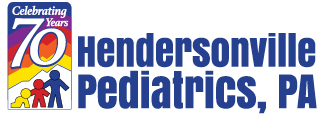April is National Child Abuse Prevention Month. There are many ways that community members can work together to keep children safe. The following is info from childwelfare.gov.
When children are nurtured, they can grow up to be happy and healthy adults. But when they lack an attachment to a caring adult, receive inconsistent nurturing, or experience harsh discipline, the consequences can affect their lifelong health, well-being, and relationships with others.
What Is Child Abuse and Neglect?
Child abuse or neglect often takes place in the home at the hands of a person the child knows well—a parent, relative, babysitter, or friend of the family. There are four major types of child maltreatment. Although any of the forms may be found separately, they often occur together.
Each State is responsible for establishing its own definitions of child abuse and neglect thatmeet Federal minimum standards. Most include the following:
• Neglect is failure to provide for a child’s
basic needs.
• Physical abuse is physical injury as a result of hitting, kicking, shaking, burning, orotherwise harming a child.
• Sexual abuse is any situation where a child is used for sexual gratification. This may include indecent exposure, fondling, rape, or commercial exploitation through prostitution or the production of pornographic materials.
• Emotional abuse is any pattern of behavior that impairs a child’s emotional development or sense of self-worth, including constant
criticism, threats, and rejection.
• Trafficking is another type of child maltreatment. States are required to consider any child who is identified as a victim of sex trafficking or severe forms of trafficking (as defined in the Trafficking Victims Protection Act) as a victim of “child abuse and neglect” and “sexual abuse.” The term “sex trafficking” means the recruitment, harboring, transportation, provision, or obtaining of a person for the purpose of a commercial sex act. The term “severe forms of trafficking in persons” means sex trafficking in which a commercial sex act is induced by force, fraud,or coercion, or in which the person induced to perform such act has not attained 18 years of age.
Why Does Child Abuse Occur?
Child abuse and neglect affect children of every age, race, and income level. However, research has identified many factors relating to the
child, family, community, and society that are associated with an increased risk of child abuse and neglect. Studies also have shown that when multiple risk factors are present, the risk is greater. Some of the most common risk factorsinclude the following:
• Immaturity. Young parents may lack experience with children or be unprepared for the responsibility of raising a child.
• Unrealistic expectations. A lack of knowledge about normal child development or behavior may result in frustration and, ultimately, abusive discipline.
• Stress. Families struggling with poverty, unstable housing, divorce, or unemployment may be at greater risk.
• Substance use. The effects of substance use, as well as time, energy, and money spent obtaining drugs or alcohol, significantly
impair parents’ abilities to care for their children.
• Intergenerational trauma. Parents’ own experiences of childhood trauma impact their relationships with their children.
• Isolation. Effective parenting is more difficult when parents lack a supportive partner, family, or community.
These circumstances, combined with the inherent challenges of raising children, can result in otherwise well-intentioned parents
causing their children harm or neglecting their needs. On the other hand, evidence shows that the great majority of families who experience these circumstances will not abuse or neglect their children.
Read more in our next blog.


